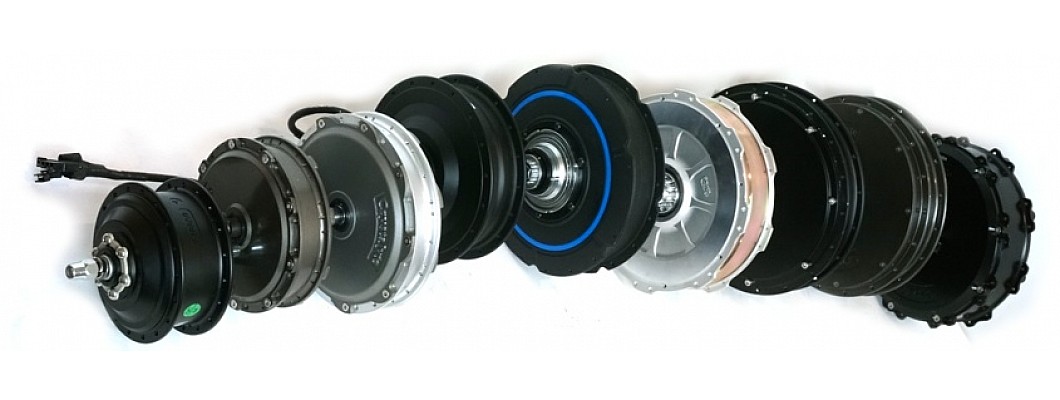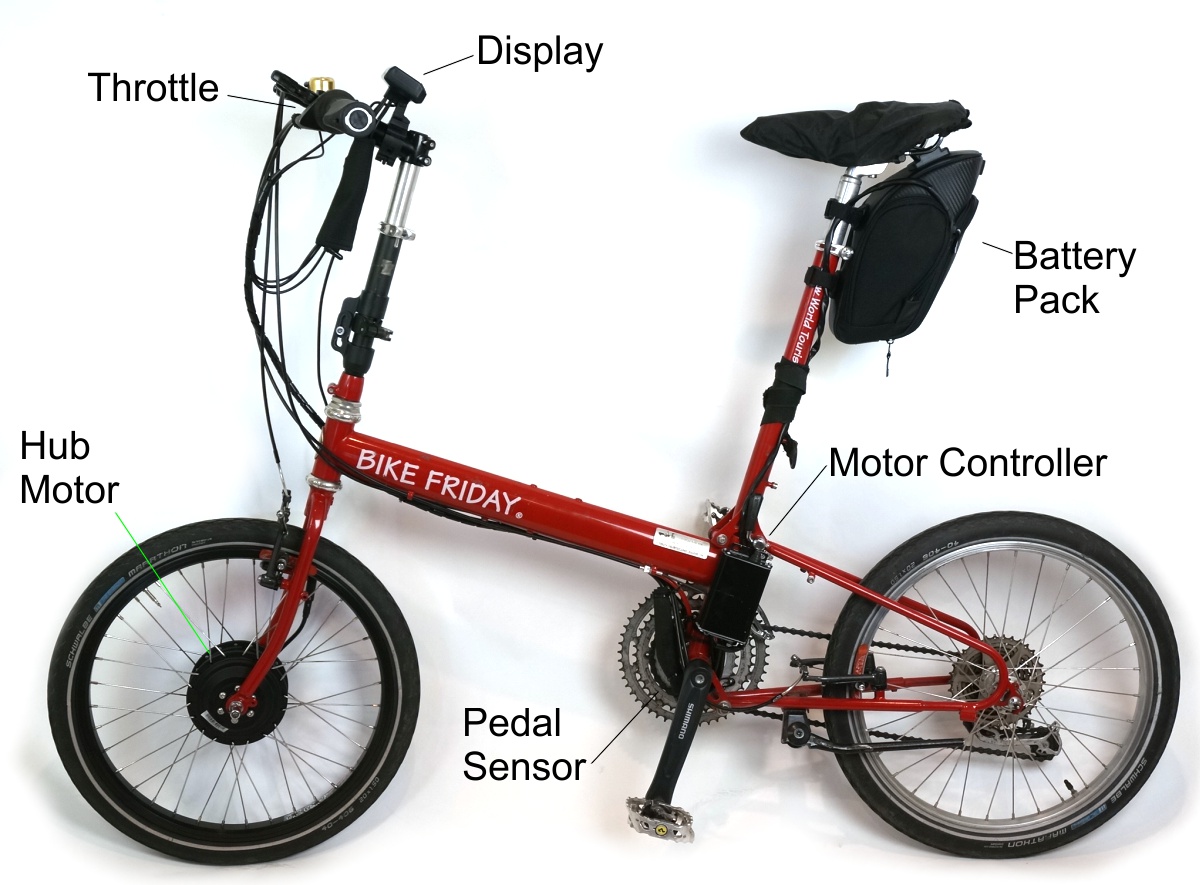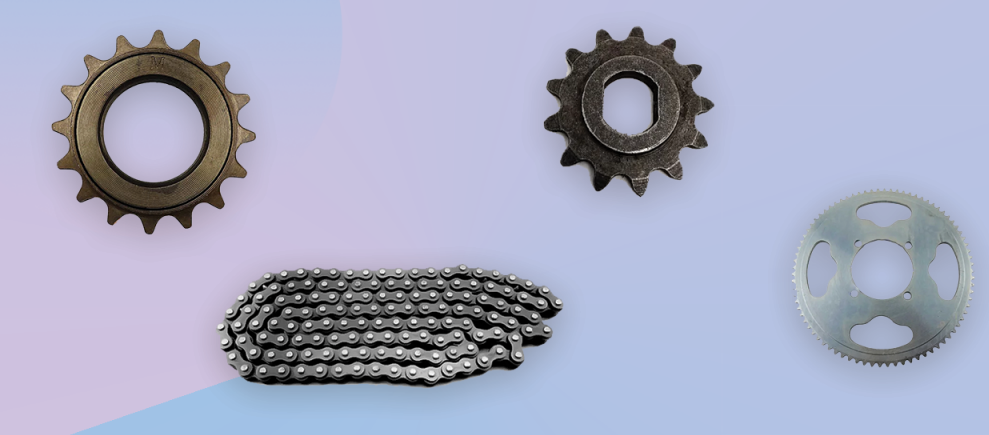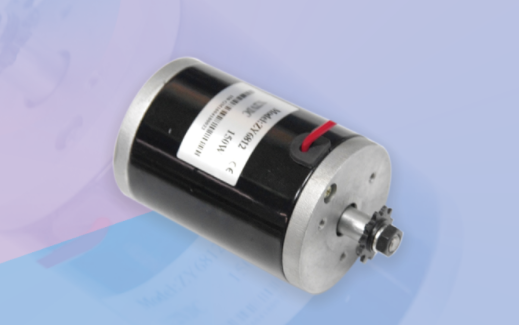08 Feb


0 Comment(s)
3842 View(s)
Hello,
In this article, we are going to discuss the most basic components of an E-bike.
In this article, we are going to discuss the most basic components of an E-bike.
There are various types of E-bikes available in the market these days and they are gaining popularity with each passing day. The most basic components which are essential to make an E-bike are the motor, controller, battery, throttle, brake and other mechanical components like gears.

E-bike motor
- An electric motor turns electric energy from the battery into mechanical power to move the bike. The motors used in an electric bike are brushed DC motor, brushless DC motors but the most common of them all is the hub motors. The reason behind this is that the hub motors are already situated inside a hub and that makes it fairly simple to mount onto a wheel either front or rear depending upon the preference. These motors are generally brushless DC motors and have 3 phase wiring for power supply. As this system is not connected to the gears, so the efficiency will be less on hills and while off-roading.
- Electric bike motors are available in wide-variety of power ratings starting from 200W to 1000W. A higher wattage rating means the E-bike will be able to provide more torque with ease. The only consequence of it is that the 1000W motor will drain the battery much more faster than the 200W one. The below table shows the speed of the motor according to its rpm and diameter.
| Wheel Speed | Vehicle Speed for Given Wheel Diameter | ||||
| 16" Wheel | 20" Wheel | 24" Wheel | 26" Wheel | 29" Wheel | |
| 100 RPM | 8 kph | 10 kph | 11 kph | 12 kph | 14 kph |
| 150 RPM | 11 kph | 14 kph | 17 kph | 19 kph | 21 kph |
| 200 RPM | 15 kph | 19 kph | 23 kph | 25 kph | 28 kph |
| 250 RPM | 19 kph | 24 kph | 29 kph | 31 kph | 35 kph |
| 300 RPM | 23 kph | 29 kph | 34 kph | 37 kph | 42 kph |
| 350 RPM | 27 kph | 34 kph | 40 kph | 44 kph | 49 kph |
| 400 RPM | 31 kph | 38 kph | 46 kph | 50 kph | 56 kph |
E-bike battery
.jpg)
- The battery pack is the energy source which provides power to the basically the bicycle. This also makes it the most expensive part of an E-bike. During the innovation period of E-bikes, they were generally made with Lead acid, Nickel Cadmium or NiMH. This has changed as modern day bikes are made exclusively from lithium-ion batteries. Lithium Ion batteries are lighter, provide more power, are more reliable and have a very long cycle life. They are 8-10 times lighter than earlier lead batteries. And with proper precautionary steps, they are expected to last over 5-6 years.
- Battery packs generally provide 36 or 48V. E-bike battery packs are available from the range of 24V to 72V. These are manufactured by brands like Panasonic, Sony, Samsung, LG. In addition to lithium ion cells, they also require a Battery Management System (BMS).
E-bike motor controller

- The motor controller is an uncommon but essential part of the E-bike. Most people think that the motor is directly connected to the battery. But that is not the case. The battery is connected to the motor driver which is then connected to the motor. The motor driver performs two main functions. Firstly, it converts the DC power from the battery into 3-phase alternating current so the motor can run on it. Secondly, the motor driver takes the input from the throttle and continuously adjusts the voltage according to the input from the user ranging from 0V to Maximum voltage supplied by the battery.
- There are two types of controllers available: pedal-activated and throttle-activated. Pedal activated controllers offer electric power when you press down on a pedal. In such systems, the controlled is situated on the handlebar.
- Throttle based controllers work on a simple throttle mechanism. A throttle simply works as a potentiometer. Throttle can be of twist grip or thumb press type.
E-bike throttle

- Throttle is the regulation of amount of power given to a motor at any given time. A throttle gives the rider control to increase or decrease to amount of power going to the motors.
E-bike brake
- The brake is optional part of the E-bike. The motor driver will shut off all the power going to the motors when the brake is pressed. There is also a second use to the brakes installed on an E-bike. It is called regenerative braking.
- Regenerative breaking occurs when you lift off the throttle so the brakes apply automatically to the motor and the heat generated from the brakes is used to charge the battery.
PAS and Torque sensor
- This is also another optional component in E-bikes. Usually throttles let you control the power which is sent to the motor. But a PAS (pedal assist system) or Torque sensor.
E-bike mechanical components

- Mechanical parts are essential to making an E-bike. These includes gears, chains, freewheels. Let us see each one of them in brief.
- Freewheel: This enables to keep your pedals stationary even when the bike is moving. They are mounted on the rear wheel.
- Pinion: The pinion gearbox and rear motor are combined together to give out a comfortable ride.
- Chain: Chain are the main component of the power transmission as it transfers the power from the pedal to the drive-wheel of an E-bike.
- Sprocket: Sprockets are the rotating gears with teeth. A sprocket can be used to transfer torque with a chain.
I hope you learned something about E-bikes with this article. And I hope you liked it. Thank you.




Leave a Comment